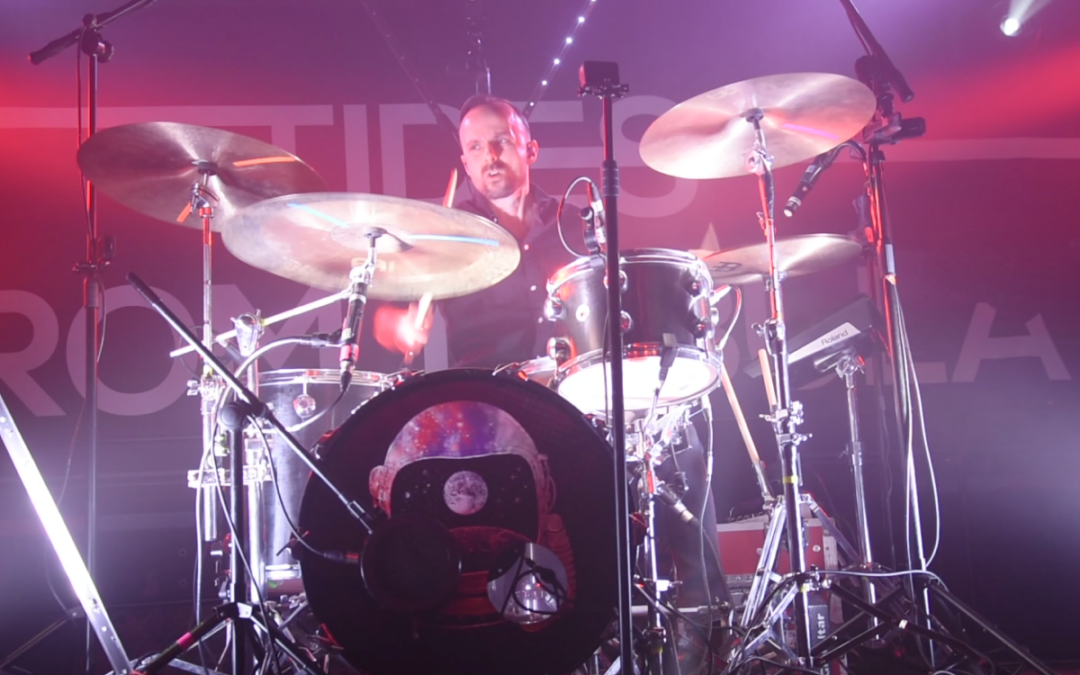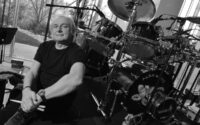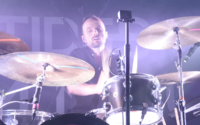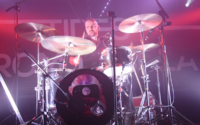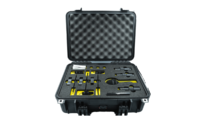On November 24, 2022, Tides From Nebula played a gig in Poznań, Poland. The band has been gaining new ground in the international market and could soon join Polish musical export acts (along with Vader, Behemoth, Decapitated, Riverside, or Trupa Trupa). We couldn’t miss out on that opportunity to meet up with the band’s drummer, Tomek Stołowski, make a bunch of drum cam videos and talk about what’s most important in life, i.e. drums (but also cymbals, skins, sticks and hardware) as well as drummers.

BeatIt: Tomek Stołowski, Tides From Nebula. Welcome!
Tomek Stołowski: Hi! Thanks for having me.
BeatIt: We’re in Poznań, Poland. You’re doing a tour of Poland as an internationally recognized band.
T. S.: You could say so. A Polish band with some international recognition.
BeatIt: You’ve been playing with great success in Europe and other places. It’s apparent from your touring schedule. No need to coy.
T. S.: We came back from a European tour last month. We played mainly in Germany and the Balcans – Romania, Greece, Bulgaria.
BeatIt: We’re here today to talk about gear. Let’s start with cymbals. As far as I know, you’re endorsed by…
T. S.: Yes. A very well known German brand called Meinl. It’s been 6-7 years. I’m really satisfied with those cymbals. I don’t have to play them. They’re simply great. They do their job both in the studio and live. Today, I’ve got a rather traditional set up with me. Let’s start with the biggest one: a 22” Benny Greb Ride. Slightly taped up as it tends to be a bit too loud. There’s an 18” Benny Greb Signature Crash to match that. This one is a 19” Byzance Traditional Medium Thin Crash and 15” hats to match. Sometimes, I use a 19” crash next to the hi hat and a 20” crash on the right. Sadly, our sound guy doesn’t like that configuration because it’s a bit louder than this one.
BeatIt: Do you differentiate in cymbal choice between studio and live?
T. S.: That depends. Some songs call for a lighter sound and then I use this configuration. On the slightly heavier songs I move the 19-inch to the left and put on a 20-inch on the right. For the studio setting I also have an Extra Thin Hammered Jazz Ride, which has little to do with an actual ride cymbal ‘cause crashes immediately, no matter how you hit it. It has absolutely no ping but it works as a crash. It can be heard on the last album and on the new singles we recently put out.
BeatIt: Let’s go over to the drums.
T. S.: For many years, I played a Sonor Delite, but I’ve grown tired of it. Some probably remember my leopard skin finish. It really did stand out. Now I’m playing a 70s Hayman Vibrasonic kit. Old but fine drums. They’ve recently become increasingly popular, especially among Polish studio owners. The configuration is: 12”, 16”, 22”.
BeatIt: The snare?
T. S.: The only one in the world. You can see a Sonor badge but it’s only got Sonor lugs. I used to have a Sonor Force 2003, which I stripped of the hardware, bought a very thin maple Keller shell, put all the lugs on it, oiled it and here it is. I made it some 5-6 years ago. Initially, I just couldn’t get it to sound right. There was always something that put me off and so it spent quite some time lying about in the studio, gathering dust. This year, I finally got around to giving it some time and effort and now I’m playing it on this tour.
BeatIt: What kind of heads do you use? Do you have a system?
T. S.: No actual system here. The only permanent element is the Evans Power Center. I’ve basically used it on all of my snares for many years. I started using it after I’d found out that Danny Carey had it and I wanted to get one to sound like Danny. (laughs)
BeatIt: Now you know why we shoot these videos. Someone will see you and decide they want to get a head like yours.
T. S.: Yeah. Although I must say I haven’t acquired Danny Carey’s sound or technique through purchasing this skin. On the toms, I’ve got clear Remo Emperors. Sometimes, I use coated ones, too. That depends on what’s needed in a given situation. I prefer clear ones live as they’re more resonant. In the studio, I often use coated heads.
BeatIt: I see some moon gels.
T. S.: Regular X-mas supermarket gels and some tape. No point in buying some expensive gels.
BeatIt: Especially when you’re gigging every day and they like to get dirty or lost.
T. S.: Yeah. I can also tell you about the spare snare. It’s interesting. This is the snare I’d been using for years before I finally put the other one in order. It’s a Ludwig Acrolite, which I bought on eBay for 100 dollars.
BeatIt: It pays off to put on alerts on eBay and go through the listings every day…
T. S.: Yes, but I doubt such bargains on Ludwig instruments could still be possible. That was 6 years ago. It was the last moment when these Ludwigs cost that kind of money.
BeatIt: A crisis is coming now, so maybe…
T. S.: …People will start selling them… Maybe.
BeatIt: Accessories. Let’s start with sticks. Any specific company and model?
T. S.: Pellwood 5B Classic Maxi. I use the ‘cause they’re good and affordable. They’re basically as durable as those from any renowned brand. This is the same stick, only sandpapered for a better grip, especially when my hands get sweaty.
BeatIt: So stick weight matters in your case…
T. S.: Yes. This stick is rather thick and slightly longer.
BeatIt: For sound and grip.
T. S.: I don’t play anything sophisticated…
BeatIt: It’s about groove. We could hear and see tonight that this is some solid drumming. You’ll see in the drum cam videos, everybody! I see a Roland SPD-SX.
T. S.: It’s the previous version. It’s not for long loops, just for percussion effects. Sort of like electronic pads.
BeatIt: IEMs? I see a mixer.
T. S.: Not really. It’s a KORG D888 recorder. Discontinued, but a great piece of equipment for sending a larger number of signals. We’ve got 8 tracks here. Four of them are loops – keyboards and percussion. There’s a time code track which controls stage lights. On this tour, we’ve got a lighting engineer with us so he’s taking care of that, but these light sticks are controlled by the time code track.
BeatIt: On tours with slightly tighter budgets, we take more light sticks, which are synched by the time code track.
T. S.: There’s the click track for me to stick to the loops, and a click track for the guitarists, which they hear when I stop playing. There’s also an additional guitar track fed to the amp. There used to be four of us but we’ve been a three-piece for a few years, so one guitar less. In some places, the other guitar part was missing, so we like to use that option.
BeatIt: I think that’s it.
T. S.: I could tell you about the hardware. It’s a bit of everything. The bass drum pedal is a Tama Speed Cobra. I don’t play any super fast stuff but I like the long and smooth footboard because I like to slide my foot along when playing doubles. The hi-hat sand is from Gibraltar, the cymbal stands are Tama and Gibraltar, the throne is a Tama 1st Chair. Bouncy. You need a comfortable throne when you get to a certain age…


